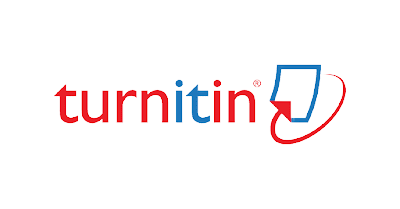PEMBUATAN KONEKTOR PADA BANGUNAN SIPIL YANG DIBANGUN DENGAN METODE SPLITTING HOUSE
Abstract
Civil buildings are structures built to meet human needs in infrastructure and the environment. This includes bridges, buildings, and more. The method used is the Splitting House method which is a term where the entire building or assembly components are manufactured off-site and assembled on-site from separate panel modules. The Splitting House method is used to overcome the relatively large dimensions of the 3DCP machine so that handling the machine to the work area becomes impractical. This method requires connectors to connect separate panels. The connector consists of a Connector L (275,25 mm x 138 mm x 2 mm) and a Connection Plate (140 mm x 140 mm x 2 mm). This connector can safely support the load, has a compressive voltage of 0.0195 Mpa and a clearance voltage of 122.5 Mpa. Weld potency reaches 18.03 (). The bolt joints have a shear capacity of 7.2 kN, bearing resistance of 5.1 kN, and tensile resistance of 8.7 kN. The manufacture of the connector takes 12.9 hours and costs Rp. 1.104.257,60.
Downloads
References
Alwisy, A., Bouferguene, A., & Al-Hussein, M. (2020). Framework for target cost modelling in construction projects. International Journal of Construction Management, 20(2), 89–104. https://doi.org/10.1080/15623599.2018.1462446
Fidan, I., Huseynov, O., Ali, M. A., Alkunte, S., Rajeshirke, M., Gupta, A., Hasanov, S., Tantawi, K., Yasa, E., Yilmaz, O., Loy, J., Popov, V., & Sharma, A. (2023). Recent Inventions in Additive Manufacturing: Holistic Review. Inventions, 8(4), 103. https://doi.org/10.3390/inventions8040103
Gibson, I., Rosen, D. W., & Stucker, B. (2010). Additive Manufacturing Technologies. Springer US. https://doi.org/10.1007/978-1-4419-1120-9
Gunawardena, T., & Mendis, P. (2022). Prefabricated Building Systems—Design and Construction. Encyclopedia, 2(1), 70–95. https://doi.org/10.3390/encyclopedia2010006
Halim, A., Sanhaji, G., & Praja, Y. A. (2023). Rancang Bangun Alat Pendeteksi Golongan Darah Dan Saturasi Oksigen Berbasis Arduino Uno. EDUSAINTEK: Jurnal Pendidikan, Sains Dan Teknologi, 11(1), 300–315. https://doi.org/10.47668/edusaintek.v11i1.962
Kristombu Baduge, S., Navaratnam, S., Abu-Zidan, Y., McCormack, T., Nguyen, K., Mendis, P., Zhang, G., & Aye, L. (2021). Improving performance of additive manufactured (3D printed) Concrete: A review on material mix design, processing, interlayer bonding, and reinforcing methods. Structures, 29, 1597–1609. https://doi.org/10.1016/j.istruc.2020.12.061
Liu, G., Zhang, X., Chen, X., He, Y., Cheng, L., Huo, M., Yin, J., Hao, F., Chen, S., Wang, P., Yi, S., Wan, L., Mao, Z., Chen, Z., Wang, X., Cao, Z., & Lu, J. (2021). Additive manufacturing of structural materials. Materials Science and Engineering: R: Reports, 145, 100596. https://doi.org/10.1016/j.mser.2020.100596
Mutiarani, R. A., Puspitawati, N. M. D., Partama, I. G. D. Y., Pandawana, I. D. G. A., Pramawati, I. D. A. A. T., Kumara, D. G. A. G., & Sudipa, I. G. I. (2025). Dewi Sinta: Mewujudkan Desa Wisata Sigap Dan Tangguh Bencana Melalui Community-Based Early Warning Systems (Cbews) Di Desa Yehembang Kangin-Jembrana. Jurnal Widya Laksmi: Jurnal Pengabdian Kepada Masyarakat, 5(1), 56–62.
Özberk, T., & Karakaya, İ. (2024). The Use of Additive Manufacturing Technologies in Restorative Dentistry. Cyprus Journal of Medical Sciences, 9(2), 76–83. https://doi.org/10.4274/cjms.2023.2023-76
Rahma Dwi Kurniawan, Nandang Rusmana, & Heri Setiawan. (2022). Penentuan Parameter Mach3 Untuk Mesin 3D Printing Bangunan [Proyek Akhir]. Politeknik Manufaktur.
Sanhaji, G., & Hizbullah, A. I. (2023). Pemanfaatan Artificial Intelligence Dalam Bidang Kesehatan. EDUSAINTEK: Jurnal Pendidikan, Sains Dan Teknologi, 11(1), 234–242. https://doi.org/10.47668/edusaintek.v11i1.999
Sugiyono. (2010). Metode Penelitian Pendidikan. Bandung alfabeta.
Taupani, R. (2024). Eksplorasi Arsitektur Modular sebagai Solusi Perumahan di Area Perkotaan Padat. Circle Archive, 1(6).
Thajudeen, S., Lennartsson, M., Elgh, F., & Persson, P. J. (2020a). Parametric modelling of steel connectors in a glulam based post and beam building system - Towards a flexible product platform approach. Advances in Transdisciplinary Engineering, 12, 564–573. https://doi.org/10.3233/ATDE200117
Thajudeen, S., Lennartsson, M., Elgh, F., & Persson, P. J. (2020b). Parametric modelling of steel connectors in a glulam based post and beam building system–Towards a flexible product platform approach. In Transdisciplinary engineering for complex socio-technical systems–real-life applications (pp. 564–573). IOS Press.
Copyright (c) 2025 Rani Nopriyanti, Antonius Adi Soetopo, Heri Setiawan, Rizqy Hikmat Akbari

This work is licensed under a Creative Commons Attribution-ShareAlike 4.0 International License.
Jurnal allows anyone to compose, correct, and do derivative works, even for commercial purposes, as long as they credit for the original work. This license is the freest. It is recommended for maximum distribution and use of licensed material.
The submitted paper is assumed not to contain any proprietary materials that are not protected by patent rights or patent applications; The responsibility for technical content and protection of proprietary materials rests with the authors and their organizations and not the responsibility of journal or its editorial staff. The primary (first/appropriate) author is responsible for ensuring that the article has been viewed and approved by all other authors. The author's responsibility is to obtain all necessary copyright waivers to use any copyrighted material in the manuscript before submission.
Jurnal Pendidikan, Sains dan Teknologi allows the author(s) to hold the copyright without restrictions and allow the author(s) to retain publishing rights without restrictions. Jurnal Pendidikan, Sains dan Teknologi CC-BY-SA or an equivalent license as the optimal license for the publication, distribution, use, and reuse of scholarly work. Jurnal Pendidikan, Sains dan Teknologi allows the author(s) to hold the copyright without restrictions and allow the author(s) to retain publishing rights without restrictions. Jurnal Pendidikan, Sains dan Teknologi CC-BY-SA or an equivalent license as the optimal license for the publication, distribution, use, and reuse of scholarly work.
In developing strategy and setting priorities Jurnal Pendidikan, Sains dan Teknologi recognize that free access is better than priced access, libre access is better than free access, and libre under CC-BY-SA or the equivalent is better than libre under more restrictive open licenses. We should achieve what we can when we can. We should not delay achieving free in order to achieve libre, and we should not stop with free when we can achieve libre.
Jurnal Pendidikan, Sains dan Teknologi is licensed under a Creative Commons Attribution-ShareAlike 4.0 International License.
You are free to:
- Share a copy and redistribute the material in any medium or format
- Adapt a remix, transform, and build upon the material for any purpose, even commercially.
- The licensor cannot revoke these freedoms as long as you follow the license terms.






